Little Nemo is roused by a new generation of artists in two new books.
Add a CommentViewing: Blog Posts Tagged with: Eric Shanower, Most Recent at Top [Help]
Results 1 - 7 of 7
Blog: Cartoon Brew (Login to Add to MyJacketFlap)
JacketFlap tags: David Petersen, Eric Shanower, Paul Hoppe, Jill Thompson, Farel Dalrymple, Yuko Shimizu, Little Nemo, Winsor McCay, Art Baxter, Gabriel Rodriguez, Chadley Fowler, Jeremy Bastian, Little Nemo: Dream Another Dream, Little Nemo: Return to Slumberland, Maelle Doliveux, Peter Diamond, Stephen Bissette, Books, Reviews, Add a tag
Blog: Here in the Bonny Glen (Login to Add to MyJacketFlap)
JacketFlap tags: graphic novels for kids, L. Frank Baum, Skottie Young, Books, Photos, Oz, Eric Shanower, Rilla, Add a tag
…to get the latest Eric Shanower/Skottie Young Oz graphic novel for your birthday.
She’s been waiting for this one for a long time, in girl-years.
Add a CommentBlog: PW -The Beat (Login to Add to MyJacketFlap)
JacketFlap tags: Eric Shanower, jonathan maberry, chuck dixon, ragnarok, Walt Simonson, ted adams, butch guice, Gabriel Rodriguez, little nemo in slumberland, v wars, winterworld, Interviews, IDW, Add a tag

[Concluding our conversation with IDW publisher Ted Adams, we get into digital, new books for 2014 and IDW's plans for getting into the TV business. Read part one here. ]
THE BEAT: Ted, you were something of a pioneer among comics publishers for going into digital and I quote what you told me when I first asked you about it. You said “I’m just going to do a deal with everybody and see what works,” as opposed to everyone else who was like “Oh I don’t know if we should try this, we don’t know, we don’t know, don’t know.” Your attitude was, let’s give this a shot. I think the first time you gave a figure, you said, oh digital’s 1% of our revenue and our sales. Now I believe it’s 15%?
ADAMS: Yeah, and it’s growing even from there. And obviously I think it’s kind of our strategy in general. We were sort of out front [in digital] before everyone else was there. But my goal as a comic book publisher is to try and get my content in front of as many readers as possible. The best place ultimately for me to have long term readers is the direct market. But I want to try and get the content in front of as many readers as I possibly can, so I felt like digital seemed like a pretty obvious place to get our content in front of people who didn’t know comic books existed. But that’s really our strategy. That’s what drives the Fun Packs, that’s why there’s the toys and Transformers comics, that’s why we’re still agnostic when it comes to E-readers. Every legitimate opportunity that comes by, we’re going to put our content there, with the hope being that we’re going to introduce new readers to comic books and then drive those readers to comic book stores. That’s our path to success.
THE BEAT: Let’s talk a little about the comic shop market because, again, in 15 years, it’s really evolved a lot, even just the makeup of the retailers. I can tell you from personal experience that in the ’90′s when I was working with Friends of Lulu, we went to retailers and said “Why don’t you promote The Simpsons comics? People like The Simpsons.” And this was a very controversial message at that time! But now it’s “Oh My Little Pony! That’s awesome!” Everyone’s feeling pretty good about where it’s at now, but what is the next level for comic shops?
ADAMS: I think that the diversity that we have today is as good as it’s ever been and I think that we want to have content that can appeal to a wide variety of readers and not just one specific reader. The industry for a long time was really good about producing content that was just for one particular kind of reader, but today we have comics for kids. We have people who like super hero books. We have great, smart comic books like Locke and Key if you’re really into that. If you’re interested in the archival side of the business the Library of American Comics and Craig Yoe for us, we’ve got that nailed. The Artist Editions bring in a completely different kind of reader and I think that diversity that you can see in a micro way with IDW—where we have everything from licensed books to creating our own books, archival books, artist editions—that diversity is what we should all aspire to for that success. We don’t want to limit ourselves to just a small percentage of readers. We want to try to appeal to as big a percentage of readers as we possibly can.
THE BEAT: Talking about expanding the market place, you also have launched a TV division?
ADAMS: Yeah, so we started IDW Entertainment towards the end of last year, last September, October. The goal of that division is that I was frustrated by the way the traditional Hollywood system works where you have a property and then you option it to a studio and you are removed from the process in every way. For us probably the most frustrating experience was actually Locke and Key where we had a deal done and the pilot got shot and it was actually a pretty good pilot and ultimately they did not set it up to go to series. We of course, weren’t involved in any of that decision making. Creatively we were a little bit involved. They certainly were soliciting input from the creators. But from a business stand point we weren’t involved at all because why would we be? We’re not the network, we don’t have any say in any of that. [Locke and Key was eventually passed on as a series.] What we decided to do was actually, to put our own money into the game, which of course, then gives you the control. What we’re doing is actually financing pilot scripts and series outlines ourselves so that instead of going and saying we’re going to shop you the property, we’re shopping you the entertainment.
Once we have a pilot script and a series bible we want to proceed with, we’re not going to a network and saying “We’re selling it to you.” What we’re saying is “We’re going to give you specific distribution rights for this content.” So in the case of one of our properties, we’ll go to a US network and say you can have domestic distribution for this property. Then we’ll go out and sell the rest of the world the same content. Essentially we’re going to go and actually produce the shows ourselves and sell off specific pieces of the rights to be able to finance that show. Then whatever the gap is on that production budget, we’re actually going to finance ourselves. So we’re going to own the show [we’re creating] and we’re going to finance the actual show. It’s a different way—this has been done in a big way for features, but as far as TV, there’s not to my knowledge anybody doing it specifically the way that we’re doing it. And so it’s a pretty revolutionary way of looking at it. The response so far has been great. Certainly the creative community is excited because now there’s a new buyer for scripts and somebody that’s willing to pay. And then from a distribution standpoint, we’re taking the financial risk. So if you’re a US network and we come to you and we say hey, we’re taking the majority of the risk here, it’s a good opportunity for them as well.
THE BEAT: Also, there are so many different channels and delivery methods now for TV.
ADAMS: Right, and that’s the whole reason we’re doing it. Many times even when we call it a TV show, you’re not watching it on your TV.
THE BEAT: Right, Amazon streaming series, blah blah.
ADAMS: Absolutely. There’s so many places that are interested in this kind of content. That’s really who we’re looking to have as our distribution partners, really not those traditional networks. For some of the things we are doing, we would look to traditional networks, but certainly we’re looking at way beyond that at this point. We’re still in very much the early days of getting this worked out. We’ve actually got a writer working on our first pilot script, we just finalized the deal with him. We’ve got two more where we’ve come to terms with the writer and several of those deals should get wrapped up in the next couple of weeks. This is very much a long term plan for us. One of the things that I love about publishing is that we can have an idea for a book and six months later or nine months later, it could be in the market. That’s certainly not going to be the case for IDW Entertainment. This is a long term play for the company that we’ll be looking at, best case scenario, probably end of this year or middle of next year we’ll be able to have our first show up and running.
THE BEAT: Now, you talk about developing properties and obviously Locke and Key is an example of a new series that was excellent and the readership reflected that excellence. But, it’s a little trickier obviously, selling a new property.
ADAMS: Yeah certainly, one of the things I’m proud of is that we, Locke and Key is a great book and it’s unarguably just a terrific book Joe [Hill] and Gabe [Rodriguez] are amazing creators. But, part of the reason that book was successful was because of the way we got behind it. We promoted that book every way possible and every opportunity possible. I think that was a really solid combination of a publisher that got behind a book and two creators who were working at the absolute top of their game, and it was successful of course for all of us. The last volume was the New York Times best seller for the last two weeks and I expect to be selling those books for the rest of my life.
The creator-owned side of the business is a very important part of our business. This year we have four books that were launched that I think all have a chance to be big hits for us. The first one is V Wars which is by Jonathan Maberry and Alan Robinson. We actually did a Free Comic Book Day book for V Wars. It spins out of a series of prose novels that we’re doing that were edited by Maberry. It’s a terrific comic and the orders for the FCBD edition were great, way more than I expected. So it’s been in a big launch there.
We’re following that up with WinterWorld, which is a book that Chuck Dixon published with [Jorge] Zaffino with Epic back in the 80′s and we republished it. It’s a hard cover, one of my favorite things that we’ve ever done. And Chuck is now doing a new WinterWorld series with Butch Guice doing art, and it’s just flat out beautiful. It’s really an extraordinary comic.
And then after that we’re doing Ragnarok by Walt Simonson which is something that we’ve had in the works for a long time. I grew up reading Walt’s Thor comics and the pages that I’ve seen from Ragnarok are just, they’re just beautiful. It’s just going to blow people away.
THE BEAT: That’s kind of a no brainer right there.
ADAMS: We’re releasing one new series per month starting in May and the last one is Little Nemo in Slumberland which is written by Eric Shanower, and drawn by Gabriel Rodriguez of Locke and Key. I feel like I’m a broken record here, but Gabe’s art on this book is unbelievably beautiful. So it’s these four books and we’ve got lots of other great books, but those four launching May, June, July and August are going to be amongst the best books that are being published this year.
So those are things that we’re passionate about and that we’re supporting in a big way starting with the V Wars for FCBD. We’re going to get behind these books in a big way. One of the things that we’re announcing today at ComicsPRO is that we’re going to create marketing collateral packages for the direct market. So these are going to be catalogues that stores can give away, they’re going to be window clings, posters—basically what we’re going to try to do is give the direct market the information they need to be able to sell these books to their customers. So instead of just taking the Previews and and letting that be the only communication that happens from a retailer to their customer, we’re going to give them information they need and marketing collateral they need to build to help sell these books.
THE BEAT: Looking towards the future, obviously there’s this whole Tumblr culture of comics now, there’s webcomics, there’s the Reddit culture of comics. I don’t know if you’re aware, but I’ve been having Brett Schenker. who does demographic research on Facebook, write about comics. And he came up with something like 24 million people have liked comic-related terms on Facebook. Obviously there is a larger audience or at least a comics-aware audience, that’s a pretty big universe, but it does seem like it’s developing. It’s spinning out into all these unexpected areas. For all media now it’s really like, oh my god there’s so many channels, there’s so many ways to do things. How do you as a publisher look at this kind of Wild West situation that we have now?
ADAMS: I love those articles that you post, because it reinforces what I keep trying to say over and over and over which is that all of us it’s just tapping a small percentage of the potential of this audience. The potential audience is gigantic and it’s on us to figure out ways to provide our content in a way that can reach those people. And so for us it’s the Ebook business, it’s the Fun Packs, it’s the comics and the toys. But as far as Tumblr culture and all those kinds of places, I mean, honestly, we’re all still figuring it out, I think. Clearly every publisher at this point has a good Facebook page and has somebody that’s in social media, if you don’t have a social media marketing person at this point then you’re sort of hopeless.
But there’s so much more than just that. And I certainly don’t have the answer on how do we convert those 24 million people into customers. That should be a goal for all of us, but you said it was the Wild West and I think that’s exactly right. Anybody who’s a comic book publisher should get up every day and think, how do I reach those people? How do I convince those people to buy my content?
THE BEAT: Just a couple more things I wanted your perspective on. Comic Book convention culture is huge right now. I know IDW is very selective about the shows you go to. How do you view that? Is it something that you think is expanding for publishers? I’ve heard other people say that publishers are really getting burnt out on all these conventions.
ADAMS: I’ve always personally struggled with the conventions because they are so disruptive to our core business. I’ve toyed with the idea the last couple of years of hiring a couple of people that would, essentially, just attend conventions for IDW and I’m still toying with that idea. We have increased the number of conventions that we attend over the last couple of years, but we’re still probably looking at six or seven conventions this year. We do some of the targeted conventions, such as a Transformers convention called BotCon that we go to; and there’s one for G.I Joe as well, and we’ve actually have had great success converting new readers at BotCon. Those are the hardest of the hardcore Transformer fans, but even with those guys sometimes they don’t know the comics exist. We had really good success converting people from those shows. At the other conventions…I don’t know, Heidi. I see this huge expansion of the number of conventions and the reality is we’re going to always have to be selective because there’s no way we could come even close to attending them all. But it is something, frankly, that we could do more with and we could do a little better. I think that we’ve gotten very dialed in on how to manage San Diego and that was something that I struggled with for a long time, but I feel like we really have got that convention nailed down in large measure thanks to Dirk Wood who joined us four years ago. But as far as our bigger convention strategy, it’s something that I’m still thinking about.
THE BEAT: So looking to the next 15 years, what’s the one thing that you haven’t done that you really want to do, Ted?
ADAMS: Let’s see. I’m going to publish an adaptation of Hunter Thompson’s Fear and Loathing in Las Vegas—that’s a personal goal of mine that I’m looking forward to accomplishing. As far as the business, for me it’s, and again I’m a broken record, but I want to expand the number of people who read our books. So I feel like I haven’t even come close to accomplishing that goal and I feel with the Fun Packs in particular, that we are right on the cusp of going from half a million copies to 5 million copies. And not in an artificial way, like the heyday of the direct market when people were buying 50 copies each. I think that we can go from 500,000 Fun Packs to 5 million Fun Packs with unique readers for those, and not people who are buying them because they think they’re going to sell them in 3 years. But that’s just one example of what my goal would be for the next 15 years. I don’t want to just double the number of people who are reading our comics, I want to have a multiple of that number of people reading our comics.
Blog: Here in the Bonny Glen (Login to Add to MyJacketFlap)
JacketFlap tags: Books, graphic novels, Oz, Eric Shanower, Marvel Comics, L. Frank Baum, rillabooks, John R. Neill, Skottie Young, Add a tag
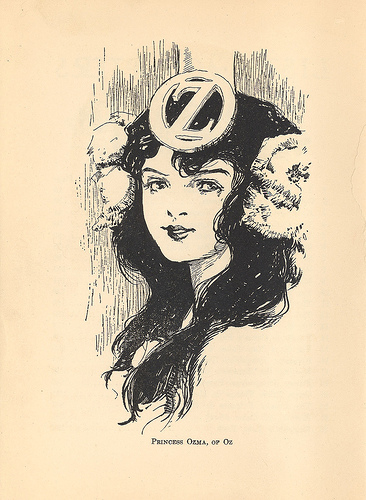
Illustration by John R. Neill
I loved the Oz books as a kid. Loooooved them. Collected the whole series, the Baum-authored ones plus a couple of the Ruth Plumly Thompson sequels, and enlisted my father’s help to track down the best editions, the white-bordered oversized paperbacks with John R. Neill illustrations.
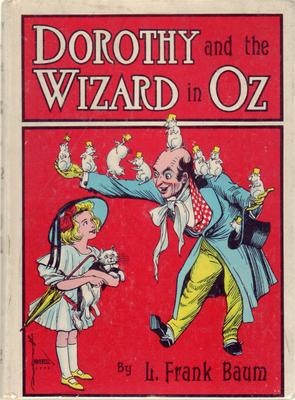
I reread the entire series regularly all through high school and even on college vacations. Dorothy, Ozma, Tik-Tok, Scraps, the Hungry Tiger, the Glass Cat, Betsy Bobbin, Billina, Polychrome, General Jinjur, the Shaggy Man, Button-Bright: this astonishing array of lively characters peopled my imagination and taught me a great deal about diversity, varying points of view, and fun. They were an outspoken bunch, these Oz folks. They had strong opinions; their perspectives clashed; they worked through conflicts and celebrated one another’s quirks. I adored them. Still do.
Strangely, the Oz books never seemed to take off for my kids as read-alouds. Baum’s prose is, I confess, a bit arch, sometimes saccharine. His genius was for character and plot, not lyricism. My older three girls went through waves of reading the series on their own, but they didn’t seem to catch Oz fever with the intensity I had.
Enter Rilla. Well, first enter Eric Shanower and Skottie Young, who are bringing the Oz books to a new generation of readers via truly gorgeous graphic novel adaptations published by Marvel. Oz, overflowing as it is with colorful, outlandish characters, was made for graphic depictions. Eric Shanower (who has become a friend of mine through Comic-Con and SCBWI) is a true Ozian—why, his own press is called Hungry Tiger, and his contributions to Oz literature and fandom are staggering. His adaptations are faithful, deft, and affectionate. And Skottie Young’s art, while a departure from the John R. Neill images burned into my brain as canon, is wholly delightful. It’s clear he is having tremendous fun bringing these creatures to life.
I’ve mentioned before that Rilla, as a reader, is drawn to books with a heavy illustration-to-text ratio. She prefers Brambly Hedge to Little House, for example; those gorgeous, intricately detailed drawing of tree-stump pantries and attics can occupy her for a full afternoon. She’ll spend an hour talking to me about Eric Carle’s techniques. For her, art is the magic; an accompanying plotline is simply a nice bonus.
We brought Eric and Skottie’s The Wonderful Wizard of Oz home from SDCC last month, and Rilla—well, you’d have thought we gave her an actual trip to the Land of Oz, she was so excited. It’s the longest, hardest book she has read on her own. Oh yes, it’s a graphic novel, but the text is quite sophisticated: there’s some nice meaty vocabulary in the dialogue. Baum didn’t talk down to his young readers, and neither does Eric Shanower. (And of course I’ve written volumes before about the excellent reading skills imparted by comics: there’s a lot of complex decoding going on as a young reader navigates those panels.)
“Bad news,” she told me mournfully one day. “I finished the best book in the world.”
“Guess what,” I whispered. “There are more.”
Her gasp, her shining eyes: no Princess of Oz was more radiant.
The next week’s worth of bedtimes saw her poring over The Marvelous Land of Oz, one of my favorite books in the series (both the original and the graphic adaptation). Every morning, she narrated the previous night’s events to me, dancing with suspense as the story unfolded, and belly-laughing over the ending.
Then came Ozma of Oz, a book about which my deep affection renders me nearly incoherent. Even that sentence is on shaky grammatical territory. Imagine a lot of squealing noises and some Rilla-esque bouncing around. I mean, I mean, Tik-Tok and the Wheelers! The lunch-pail trees! The loathsome, fabulous Princess Langwidere and her collection of interchangeable heads. SHE WANTS DOROTHY’S HEAD FOR THE COLLECTION, YOU GUYS. Come on. And then the Nome King and his high-stakes guessing game (shades of Heckedy Peg), and Billina the Hen’s surprising trump card. Oh, oh, oh.
Don’t tell Rilla, but I’d already given a copy of Ozma to my goddaughter, Vivi, whose mother is, if anything, an even bigger Oz fanatic than I am. She even looks like Ozma. (Kristen, why why why didn’t we ever go as Ozma and Polychrome for Halloween?)
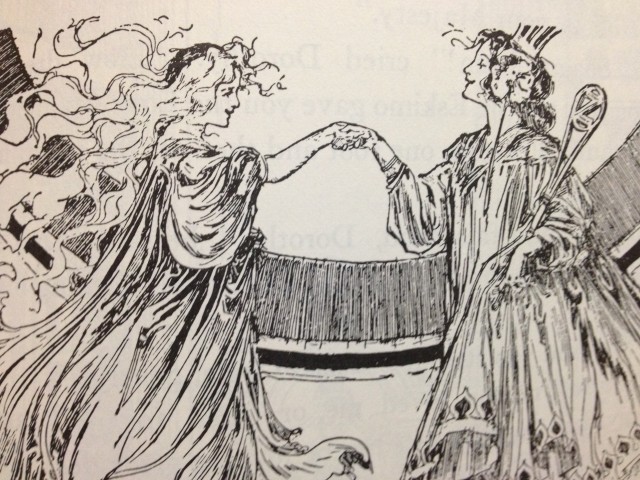
Polychrome, the Rainbow’s Daughter, meets Princess Ozma. Illustration by John R. Neill.
Rilla hasn’t met Polychrome yet. She will swoon, mark my words. The Rainbow’s Daughter? Polly of the swirling robes and floaty hair? Rilla’s a goner. Like Ozma, she’ll make Polly’s acquaintance in The Road to Oz. I can’t wait to see what Skottie Young does with Polychrome and the Shaggy Man. Both characters are bubbling over with the whimsy he captures so well.
But first comes Dorothy and the Wizard in Oz. Even for Baum, this is a bizarre tale. Dorothy gets caught in a San Francisco earthquake and falls all the way to the center of the earth, where weird vegetable people (as in, they grow on vines) called the Mangaboos are on the verge of executing her when, whew!, who should float down in his balloon but Dorothy’s old acquaintance, the Wizard?
After that comes The Emerald City of Oz. Rilla and I may not be able to wait for the collected edition; we might have to start picking up the floppies from our local comic shop.
Add a CommentBlog: PW -The Beat (Login to Add to MyJacketFlap)
JacketFlap tags: Books, Literacy, Art, Eric Shanower, Add a tag
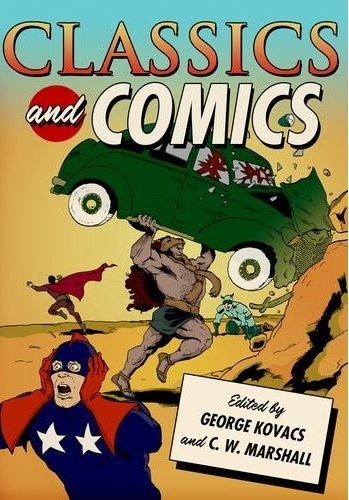
Comics are really coming up in the world. Next month the Oxford University Press is releasing a completely un-ironic look at how comics have covered classical Greek and Roman mythology. Classics and Comics
CLASSICS AND COMICS is the first book to explore the engagement of classics with the epitome of modern popular literature, the comic book. The volume collects sixteen articles, all specially commissioned for this volume, that look at how classical content is deployed in comics and reconfigured for a modern audience. It opens with a detailed historical introduction surveying the role of classical material in comics since the 1930s. Subsequent chapters cover a broad range of topics, including the incorporation of modern theories of myth into the creation and interpretation of comic books, the appropriation of characters from classical literature and myth, and the reconfiguration of motif into a modern literary medium.
The book also contains a new 12 page comic by Eric Shanower, author of the gorgeous take on the Trojan War, Age of Bronze. Shanower was kind enough to send us a preview of the comic:
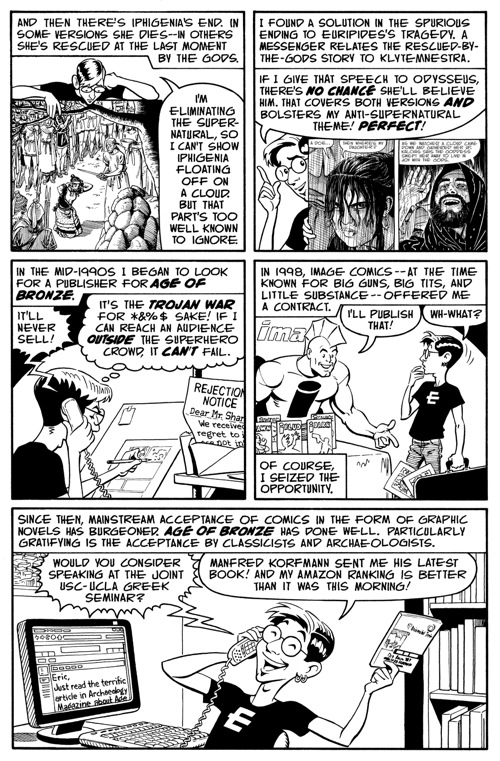
Please note: the cover to this book would fit right into Bully’s screaming man tribute page
.Blog: Children's Illustration (Login to Add to MyJacketFlap)
JacketFlap tags: comics, Jack Kirby, graphic novel, Brian K. Vaughan and Pia Guerra, Eric Shanower, Add a tag
Jack Kirby, whose life and work are getting another look with the “Fourth World Omnibus” and “Kirby: King of Comics,” jumped from Marvel to DC Comics and from familiar heroes to those with a more far-out sensibility.
Blog: librarian.net (Login to Add to MyJacketFlap)
JacketFlap tags: library, libraries, dc, publiclibrary, dcpublic, Add a tag
I’ve shown you my sad set of MLK’s Library photos from when I went to DC. My friend Mary Early has found an older, niftier looking set of photos of the same library back when it was new and lovely and full of hope and promise. I wish the Save DC Libraries site looked like it was still alive. The DC Friends site is still kicking, albeit with bad news and the DC Public Library Foundation looks like they spent all their money on web design. Meanwhile DC Public hires teens to shelve books and answer phones which seems like a real good news/bad news situation in a library dealing with massive underfunding and understaffing.








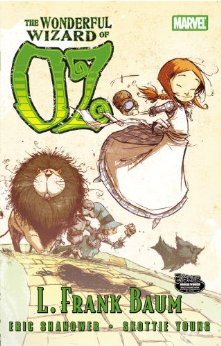

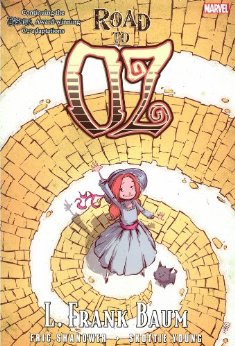
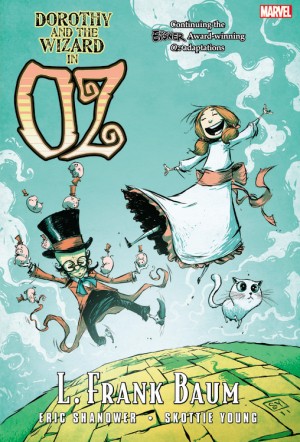
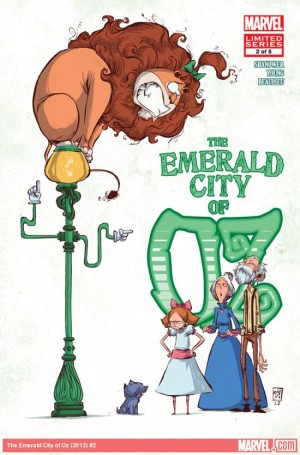
What a fascinating & brilliant guy. Also really impressed with his “off road” strategy for developing TV properties. Here’s to continued IDW success!
Maybe I’m misunderstanding Adams when he says “there’s not to my knowledge anybody doing it specifically the way that we’re doing it” in regards to their television development model, but isn’t that basically how every TV production company works? Don’t they produce pilot scripts and pitches to sell to networks to distribute?
Or did Adams mean they’ll be creating and shooting pilot episodes of their own THEN find a distributor AFTER they have a finished product to shop around? If so, that’s pretty ballsy. Pilot episodes are pretty expensive to produce. And without a pilot partnership with a network, a production company assumes all the financial risk should that pilot not find a home.
(Of course, I could be misreading the whole thing.)
[…] Beat – IDWs Ted Adams Interview Part 2: What’s up for Little Nemo, WinterWorld, Ragnarok and V Wars. – Part 2 of The Beat’s solid […]
Congratulations to Ted and the IDW team for making comics more interesting – here’s to many more!
Interesting… IDT once owned part of Archie’s media division, as well as Manga Entertainment (2004). Two years later, they sold IDT Entertainment to Liberty Media in exchange for IDT stock LM owned, plus money. One year after that, they bought IDW.
Ahem…
Wonder Woman: The Complete Newspaper Comics
9781631400285
196 pages
August 2014
$49.99
Wikipedia:
“From 1944–1945, there was a short-lived daily comic strip, written by Wonder Woman creator Charles Moulton and drawn by H. G. Peter.[21]“